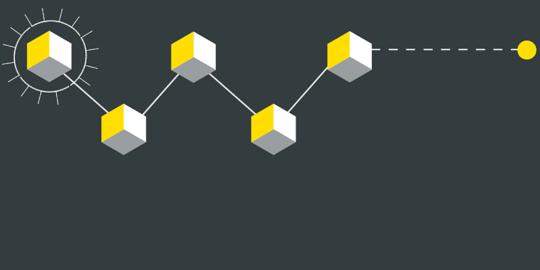On 6 June 2016, BEREC (the “Body of European Regulators for Electronic Communications”) issued a first proposal of ‘Guidelines on Net Neutrality’ (PDF), following an instruction laid down in Art. 5 (3) TSM Regulation (EU 2015/2120). This Regulation has introduced rules on Net Neutrality, directly binding in all EU member states (see here for a first overview of the Regulation). However, many parts of the Regulation are phrased in a vague and imprecise way. In light of this BEREC was assigned to the task of proposing guidelines on what the Regulation’s rules actually mean.
Since the Regulation itself is too imprecise in many ways, BEREC now has some considerable influence on what ‘Net Neutrality’ will mean in practice. Therefore, seen from the perspective of an internet service or content provider, the Guidelines are as important as the original Regulation. Consequently, it is highly advisable that affected providers assess and comment on the draft Guidelines during the hearing phase which ends on 18 July 2016, 14:00 CET.
BEREC had the challenging job of providing comments on a complex and imprecisely phrased Regulation. The document delivered by BEREC has 43 pages, most parts contain very condensed information. This article aims to provide a concise overview of the most important points.
Here are the 10 key things to know about the draft proposal.
1. New terminology
BEREC introduces some new names and acronyms:
- A CAP is a ‘Content and Application Provider’, i.e. an entity or a person making content or services available on the internet or through specialised services (page 1, para. 2 of the draft Guidelines). BEREC confirms that CAPs (for example TV companies distributing through the internet) are ‘end users’ and therefore protected by the Net Neutrality rules (page 4, para. 5).
- A PECP is a ‘provider of electronic communications to the public’, the term comprising both ‘public communication networks’ and ‘electronic communications services’ (page 5, paragraphs 8 and 9).
- The Guidelines (page 1, para. 2) define an ISP as an ‘Internet Service Provider’, which provides Internet Access Services (IAS).
- A sub-internet service is an internet access service which is limited to specific applications or specific endpoints of the internet, e.g. to a particular website. BEREC describes such services as infringement of the net neutrality rules, because ISPs are not allowed to block access to specific parts of the internet (page 6, para. 17). However, in another part of the Guidelines, BEREC also says that a service “where the number of reachable end-points is limited by the nature of the terminal equipment used with such services” is not an internet access service at all, therefore out of scope of the neutrality obligations (page 6, para. 18).
2. Scope of the Net Neutrality rules: Comments on Interconnection, VPN Services, Wi-Fi and Corporate Networks
The new net neutrality rules mainly relate to providers of internet access services (Art. 3 and Art. 4 of the Regulation). The Regulation (Art. 2 (2)) defines ‘Internet Access Services’ as
“a publicly available electronic communications service that provides access to the internet, and thereby connectivity to virtually all end points of the internet, irrespective of the network technology and terminal equipment used.”
In this regard, BEREC also comments on what ‘publicly available’ actually means (page 5, para. 10):
“Electronic communication services or networks that are offered not only to a predetermined group of end-users but in principle to any customer who wants to subscribe to the service or network should be considered to be publicly available. Electronic communication services or networks that are offered only to a predetermined group of end-users could be considered to be not publicly available.”
BEREC also comments on some specific situations which it apparently considers as doubtful cases or useful examples:
- Interconnection: BEREC does not see interconnection between networks as an internet access service (page 4, para. 5; page 13 para. 47). However, BEREC does not want to leave interconnection agreements entirely out of scope: BEREC considers interconnection practices relevant in so far as they “have the effect of limiting the exercise [of] end-user rights”. According to the Guidelines, this may be the case if interconnection is “implemented in a way which seeks to circumvent the Regulation” (page 4, para. 6).
- Non-public PECPs: BEREC takes the stance that Providers of Electronic Communication Services or Communication Networks (PECPs) which are not publicly available are generally “out of scope of this Regulation” (page 5, para. 9). This finding is rather surprising, since the main addressees of the net neutrality rules are not the “PECPs”, but the ISPs, i.e. the internet access providers (see here for an assessment of the legal structure of the Regulation). PECPs are only mentioned in Art. 3 (5) and Art. 5 of the Regulation, but not in the core parts of Art. 3 (1)-(3). However, while BEREC seems to skip one logical step, ultimately, the finding is correct: Just as PECPs, ISPs are only in scope, if they are “publicly available” (Art. 2 (2) TSM Regulation).
- VPN Services, which are “provided by the ISP to anyone”, are “typically be considered to be publicly available”. “To the extent that VPNs provide access to the internet they […] should […] be considered as publicly available electronic communications services” (page 5, para. 11). VPN services are not to be confused with VPN networks which according to the draft Guidelines may be specialised services (page 26, para. 111).
- Access to the internet provided by cafés and restaurants, g. through local Wi-Fi Hotspots, is “limited to customers of an enterprise rather than the general public”, and therefore not in scope of the net neutrality rules (page 5, para. 12).
- Internal corporate networks are “typically limited to employees and other people connected with the business or organisation concerned”, and therefore out of scope (page 5, para. 12)
3. No obligation to offer both IPv4 and IPv6
While according to Art. 2 (2) in conjunction with Art. 3 of the TSM Regulation an ISP has the obligation to provide connectivity to “virtually all end points of the internet”, BEREC does, “at present,” not see this as “a requirement on ISPs to offer connectivity with both IPv4 and IPv6” (page 6, para. 16).
4. IoT/M2M connectivity services mainly exempted
There is good news for all companies providing connectivity in relation to the Internet of Things (IoT): BEREC clarifies that so called machine-to-machine (M2M) connectivity services, which are mainly provided in relation to the ‘Internet of Things’ (for example to smart meters), are not necessarily in scope. If the number of reachable endpoints of the internet is limited due to the nature of the device (e.g. because a smart meter communicates only with dedicated host servers), the connectivity services are “outside the scope of the Regulation unless they are used to circumvent this Regulation” (pages 6 and 7, para. 18).
BEREC says that the connected ‘things’ of the IoT still can use an internet access service, but they do not have to. They can also use a private network or a ‘specialised service’. In that regard, BEREC emphasises that if the M2M connectivity service is a specialised service in the meaning of Art. 3 (5) TSM Regulation, the rules for this type of service apply (page 7, para. 18)
5. Clarifications on the users´ rights to use their own terminal equipment – and the “likely” end of tethering restrictions
Regarding the right of the end users to choose their own terminal equipment (Art 3 (1) TSM Regulation), BEREC provides comments on which cases a specific device is to be considered as ‘terminal equipment’ – then in scope of the end users´ rights – or still as part of the network, namely of the Network Termination Point (NTP), as defined in Article 2 (da) of the Framework Directive (2002/21/EC) (pages 8 and 9, para. 23-25).
BEREC says that the National Regulatory Authorities (NRAs), when “considering whether end-users may use the terminal equipment of their choice” should assess whether an ISP aims to make some equipment “obligatory”, while “restricting” end users´ abilities (page 8, para. 24) or whether “there is an objective technological necessity for the obligatory equipment to be considered as part of the ISP network.” (page 8, para. 25).
Therefore, in the eyes of BEREC, the practice of restricting tethering (i.e. the connecting of devices with mobile phones and, through them, with the internet) is “likely” in conflict with the Regulation (page 8 para. 25).
6. More Details on the anti-discrimination rules – and an undecided stance on Zero Rating
Art. 3 (2) of the TSM Regulation determines that both “agreements” and “commercial practices” of internet access providers shall not limit the net neutrality rights of the end users.
This relates mainly to the practice of “zero rating”, which BEREC describes as follows (page 10, para. 37):
“This is where an ISP applies a price of zero to the data traffic associated with a particular application or category of applications (and the data does not count towards any data cap in place on the IAS).There are different types of zero-rating practices which could have different effects on end-users and the open internet, and hence on the end-user rights protected under the Regulation.”
However, Art. 2 (2) of the Regulation has a wider scope, it is directed at all discrimination obligations that form the core of “Net Neutrality” (see here for a full description). In that regard, BEREC takes the position that as soon as traffic associated with a particular application is subject to a preferential traffic management practice, or is priced differently, the net neutrality rules come into play (page 10, para. 33).
The assessment of BEREC in its draft Guidelines under what circumstances ISPs can offer differentiated pricing models for specific content or applications, in particular, apply ‘zero-rating’, appears somewhat unclear.
On the one hand, BEREC begins with a rather straightforward statement (page 11, para. 38):
“A zero-rating offer where all applications are blocked (or slowed down) once the data cap is reached except for the zero-rated application(s) would infringe Article 3(3) first (and third) subparagraph”
But then, in the following parts of the draft Guidelines, BEREC seem to prefer a rather differentiated and cautious approach. Therefore, BEREC provides quite a number of subjects the national regulators should “consider” (page 11, para. 42) when making a “comprehensive assessment” (page 11, para. 43 and 45).
The criteria to be included in this assessment include, according to BEREC,
- the “goals of the Regulation”,
- the “market positions of the ISPs and CAPs involved”,
- the “effects on consumer and business customer end-user rights”,
- as well as “CAP end-user rights”,
- the “scale of the practice and the presence of alternatives“ and
- “the effect on freedom of expression and media pluralism” (page 11, para. 43).
BEREC says that not “every factor affecting end-users’ choices should be considered to limit the exercise of end-users’ rights”, but only if they “result in choice being materially reduced.” (page 11, para. 42).
The BEREC´s Guidelines then continue with even more detailed explanations on how national regulators should make their assessment (page 11, para. 43 to 45).
What does all of this mean? In essence, that BEREC is unwilling to provide a ‘one size fits all’-solution on this matter, and that assessments of this matter by the National Regulatory Authorities might become quite complicated.
7. Two tests for the permissibility of traffic management
The structure of the TSM Regulation´s provisions on the permissibility of traffic management are complicated (see here for a flow-chart). However, two of the most relevant conditions for the permissibility of traffic management are that the management practices must be applied in a non-discriminatory and a proportional way (Art. 3 (3) second subparagraph TSM Regulation).
In that regard, BEREC proposes two ‘tests’.
The non-discriminatory test (page 15, para. 57):
“When considering whether a traffic management measure is non-discriminatory, NRAs should consider the following:
- The requirement for traffic management measures to be non-discriminatory does not preclude ISPs from implementing – in order to optimise the overall transmission quality and user experience – traffic management measures which differentiate between objectively different categories of traffic (ref. Recital 9 and paragraphs 59-64 below).
- Similar situations in terms of similar technical QoS requirements should receive similar treatment.
- Different situations in terms of objectively different technical QoS requirements can be treated in different ways if such treatment is objectively justified.
- In particular, the mere fact that network traffic is encrypted should not be deemed by NRAs to be an objective justification for different treatment by ISPs.”
The proportionality test (page 15, para. 58):
“When considering whether a traffic management measure is proportionate, NRAs should consider the following:
- There has to be a legitimate aim for this measure, as specified in the first sentence of Recital 9, namely contributing to an efficient use of network resources and to an optimisation of overall transmission quality.
- The traffic management measure has to be suitable to achieve the aim (with a requirement of evidence to show it will have that effect and that it is not manifestly inappropriate).
- The traffic management measure has to be necessary to achieve the aim.
- There is not a less interfering and equally effective alternative way of achieving this aim (e.g. equal treatment without categories of traffic) with the available network resources.
- The traffic management measure has to be appropriate, e.g. to balance the competing requirements of different traffic categories or competing interests of different groups.”
Both tests will be helpful, both to the regulators and to the ISPs, while administering the traffic management systems. Nonetheless, it has to be kept in mind that those two conditions are not the only ones which are relevant – there are more. BEREC provides definitions and explanations for almost all conditions involved, including the ‘no longer than necessary’-requirement (page 17, para. 69 and 70) and the permissibility of congestion management (page 22, para. 84 to 89).
8. Description of Specialised Services
Art. 3 (5) TSM Regulation exempts so-called ‘specialised services’ from the net neutrality obligation, but introduces other requirements, if an ISP wants to offer such specialised services.
The TSM Regulation treats specialised services not as an exception of the net neutrality obligation, but as an entirely different kind of service – according to Art. 3 (5) of the TSM regulation, specialised services are not internet access services at all.
The BEREC Guidelines now provide a ‘list of features’ BEREC considers as characteristic for specialised services (page 24, para. 97):
- “they are services other than IAS services;
- they are optimised for specific content, applications or services, or a combination thereof;
- the optimisation is objectively necessary in order to meet requirements for a specific level of quality.”
BEREC proposes that National Regulatory Authorities should assess these requirements by requesting information from the service providers (page 24, para. 104) and then decide on a case-by-case basis (page 25, para. 108).
It is notable that in para. 106 of the Guidelines, BEREC clarifies that not any kind of traffic prioritisation has the effect of creating a specialized service. According to the draft Guidelines, a specialised service only emerges when a “connection is characterised by an extensive use of traffic management in order to ensure adequate service characteristics and strict admission control”. In addition to that, the specialised service must be offered “logically separated from the internet access service” (page 25, para. 106).
BEREC provides some examples of services it considers as specialised services:
- VoLTE (page 25, para. 109)
- Linear broadcasting IPTV with specific Qualitity-of-Service requirements (page 25, para. 109)
- Real-time health services, g. remote surgery (page 25, para. 109)
- “Some new machine-to-machine communications services” (page 25, para. 109)
- VPN network services, which “provide a private connection between a number of sites (e.g. different locations of a corporation)” and are “implemented over common infrastructure with internet access services (e.g. based on MPLS)” and “provided in parallel with internet access services” (page 26, para. 111) are specialised services. – VPN network services are not to be confused with VPN applications which are used e.g. for teleworking (page 26, para. 111, first bullet).
9. Conditions for the permissibility of Specialised Services
While specialised services are exempted from the net neutrality obligation, internet access providers are only allowed to offer them if they meet some separate requirements (Art. 5 (3) TSM Regulation). BEREC summarizes those conditions as follows (page 24, para. 98):
- “the network capacity is sufficient to provide the specialised service in addition to any IAS provided;
- specialised services are not usable or offered as a replacement for IAS;
- specialised services are not to the detriment of the availability or general quality of the IAS for end-users.”
BEREC boils these requirements down to the statement that an internet access provider who wants to offer specialised services “would have to ensure sufficient network capacity” (page 27, para, 114) both for the specialised service and the ‘general quality’ of the internet access service (page 27, para. 113). In another part of the Guidelines (page 28, para. 118) BEREC however says that an ISP only has to ensure a ‘minimum speed’ for the internet access while the end user uses a specialised service. Only the internet access service of the individual user of the specialised service may be slowed down, not the internet access of other end-users (page 27/28, para. 118).
10. Transparency obligations
ISPs all over Europe are currently in the process of implementing the Regulation´s new transparency obligations (Art. 4 TSM Regulation). The ISPs have the task to provide all end users with very detailed information on their internet access services, including the way the traffic management works and how specialised services affect the internet access, Most importantly, they have to provide a ‘clear and comprehensible explanation’ of the upload and download capacities of the respective internet access service. This explanation must be given for different categories of up- and download speed, such as ‘minimum’, ‘maximum’, ‘normally available’ and ‘estimated maximum’ (categories depending on the type of access service).
BEREC’s Guidelines will add further to the granularity of the new transparency rules – the comments of BEREC on the matter are quite detailed (pages 29 to 35, paragraphs 124 to 156). For example, BEREC comments on the structure of customer information documents (page 29/30, para. 127 and 128) and on the question whether other quality parameters but the upload- and the download-speed should be mentioned, such as delay, jitter and packet loss (page 31, para 134).
Regarding the terms ‘minimum’, ‘maximum’, ‘normally available’ and ‘estimated maximum’, it is noteworthy that BEREC does not define these in the proposed Guidelines. BEREC recommends that the national regulatory authorities should set their own requirements on definitions (pages 32, 33 and 34, paragraphs 141, 143, 145 and 154).
What will happen next?
At this point, the Guidelines of BEREC are still a draft, and subject to a public consultation. All affected service providers and other individuals and organisations can send their opinions on the Guidelines to BEREC. The outcome of this consultation will have a strong impact on internet-related services – not only the internet access services themselves, but probably also on content and application services and the way they are marketed. Consequently, assessing and commenting the draft Guidelines is highly advisable.
In many respects, even the current versions of the Guidelines do not fully clarify whether certain practices are permitted or not. The final decisions will have to be made by the National Regulatory Authorities, and, ultimately, the courts.
When making such an assessment, every National Regulatory will have to take “utmost account” of the BEREC Guidelines (recital 19 of the TSM Regulation; Art. 3 (3c) of the Framework Directive). In addition although the courts are not bound to the Guidelines of BEREC, they will probably read and consider them carefully before taking their decisions.
The consultation process is open until 18 July 2016, 14:00 (CET). This gives BEREC only one and a half months to prepare the final version of the Guidelines, which, according to Art. 5 (3) TSM Regulation, must be published no later than 30 August 2016.
Even though formally, the net neutrality rules of the TSM Regulation have already become effective on 30 April 2016 in most member states (except those with preceding domestic net neutrality rules, such as the Netherlands), it is unlikely that national regulatory authorities will start to enforce any of the rules before BEREC has published its final Guidelines. After that, however, the ISPs should prepare to be held to comply with the rules. It remains yet to be seen how assertive the approach of the National Regulatory Authorities will be, and how many cases will go to court.
Find a full assessment of the new rules on net neutrality here.




